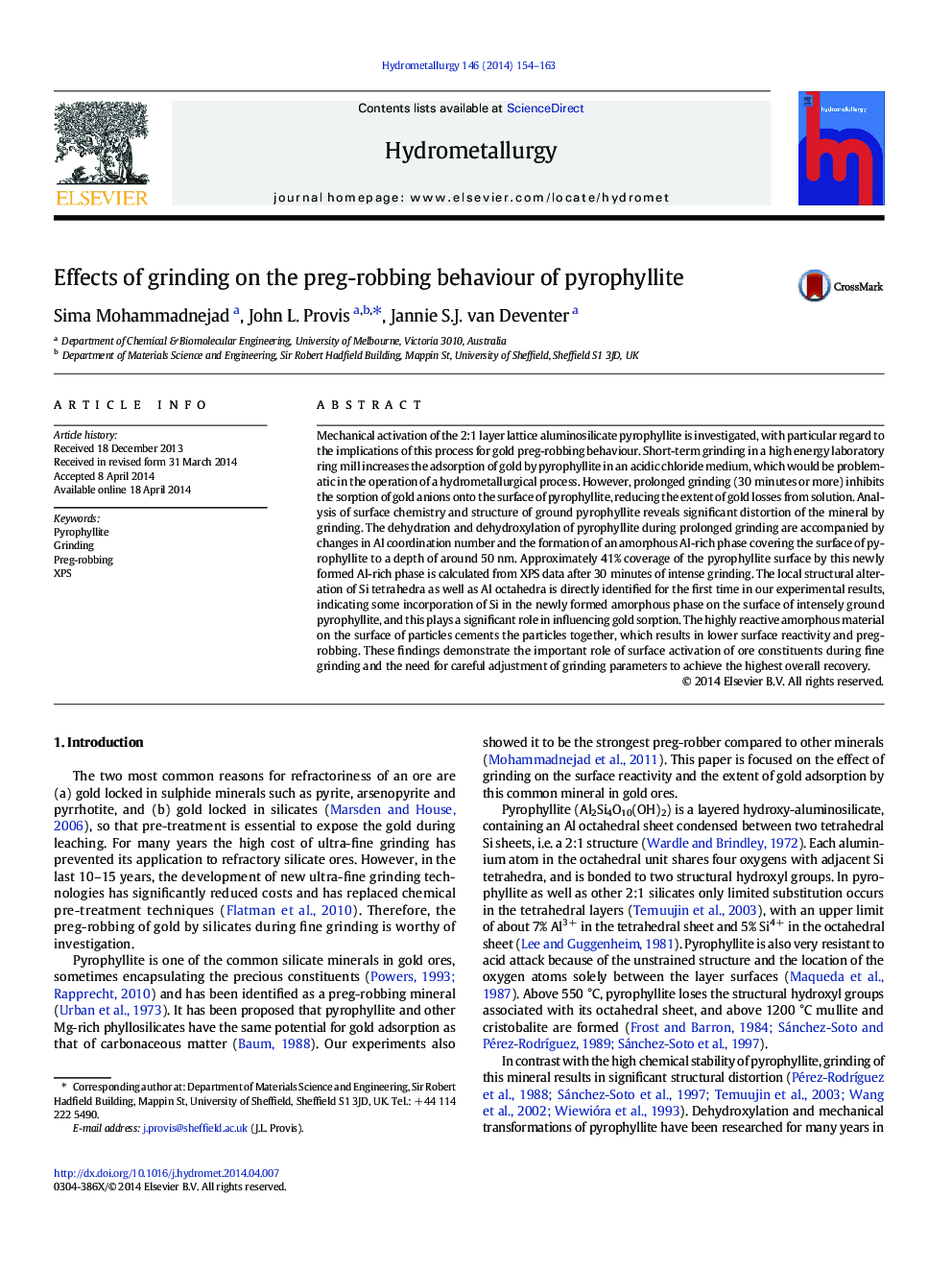| Article ID | Journal | Published Year | Pages | File Type |
|---|---|---|---|---|
| 212143 | Hydrometallurgy | 2014 | 10 Pages |
•Pyrophyllite surface is damaged by energetic grinding.•Grinding duration influences preg-robbing in gold chloride solution.•Surface alteration continues after size reduction ceases.•Gold sorption and spectroscopy show surface structure controlling preg-robbing.
Mechanical activation of the 2:1 layer lattice aluminosilicate pyrophyllite is investigated, with particular regard to the implications of this process for gold preg-robbing behaviour. Short-term grinding in a high energy laboratory ring mill increases the adsorption of gold by pyrophyllite in an acidic chloride medium, which would be problematic in the operation of a hydrometallurgical process. However, prolonged grinding (30 minutes or more) inhibits the sorption of gold anions onto the surface of pyrophyllite, reducing the extent of gold losses from solution. Analysis of surface chemistry and structure of ground pyrophyllite reveals significant distortion of the mineral by grinding. The dehydration and dehydroxylation of pyrophyllite during prolonged grinding are accompanied by changes in Al coordination number and the formation of an amorphous Al-rich phase covering the surface of pyrophyllite to a depth of around 50 nm. Approximately 41% coverage of the pyrophyllite surface by this newly formed Al-rich phase is calculated from XPS data after 30 minutes of intense grinding. The local structural alteration of Si tetrahedra as well as Al octahedra is directly identified for the first time in our experimental results, indicating some incorporation of Si in the newly formed amorphous phase on the surface of intensely ground pyrophyllite, and this plays a significant role in influencing gold sorption. The highly reactive amorphous material on the surface of particles cements the particles together, which results in lower surface reactivity and preg-robbing. These findings demonstrate the important role of surface activation of ore constituents during fine grinding and the need for careful adjustment of grinding parameters to achieve the highest overall recovery.
